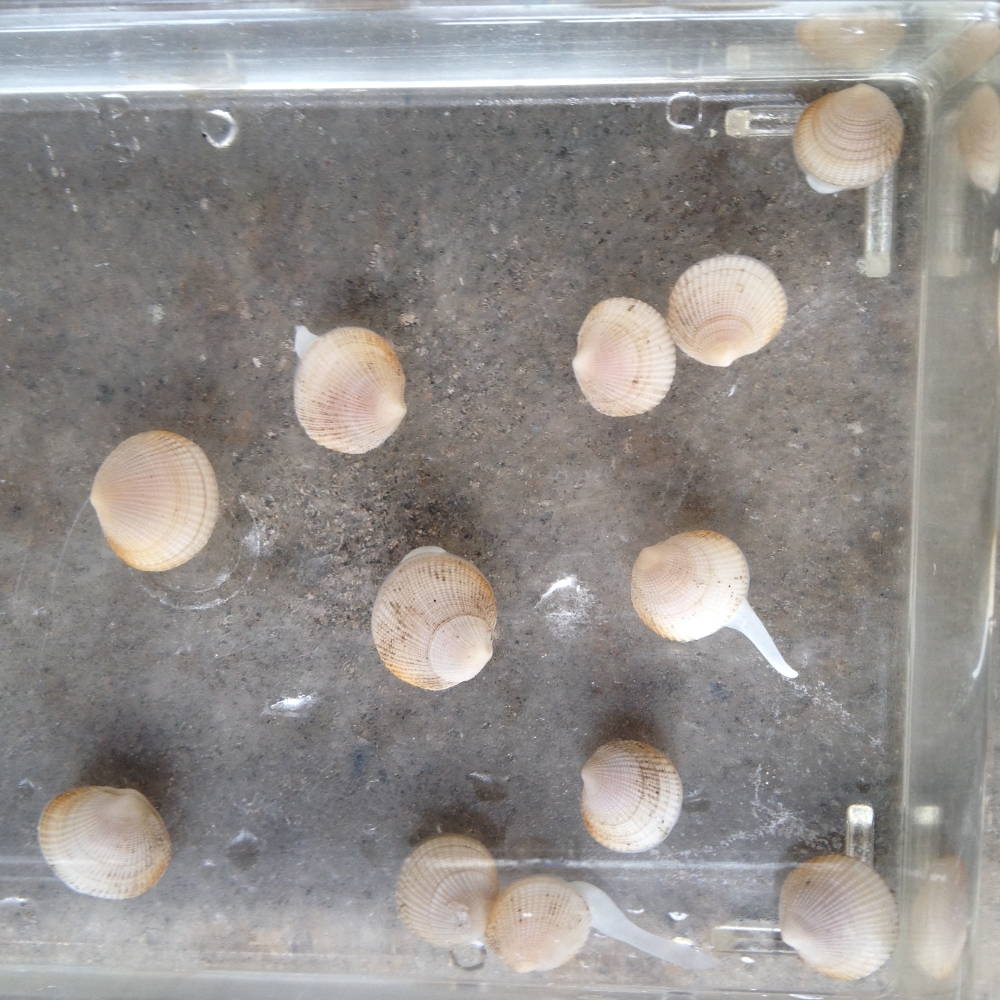Seagrasses are flowering marine plants with numerous ecologically and economically valuable functions in coastal areas: they blunt wave energy, trap and stabilize sediment, sequester carbon, and provide food, habitat, and nursery grounds for many other species. Sediments from seagrass beds tend to have a strong “rotten egg” smell because seagrasses shed leaves that are then decomposed by bacteria, producing sulfides. At very high concentrations, or in combination with other stressors like high temperature or high salinity, sulfides can damage or kill seagrasses.
Clams in the family Lucinidae are common in seagrass beds worldwide. Lucinid clams have chemosynthetic bacteria in their gills that convert sulfides to non-toxic sulfate and produce food for themselves and their hosts in the process. Recent studies (van der Heide et al. 2012, de Fouw et al. 2016) have shown that one species of lucinid can lower sulfide levels in seagrass beds, reducing the negative effects of sulfides on seagrass growth. The lucinids then benefit from the oxygen that healthy seagrass releases through its roots.
Diana wanted to know: does this mutualism exist in other tropical regions with different species of lucinid and seagrass? Do different species of lucinid have different effects on sulfide levels in sediment? Beyond oxygen, does seagrass benefit lucinids by shielding them from predators? And what can the abundance and distribution of lucinids tell us about the current status of their relationship to seagrass?
Diana was joined in Panama by full-time assistants Kevin Katcher and William Wied (SoMAS ‘16). Will earned a B.S. in Marine Sciences after working as a research assistant and technician in the Peterson Lab in 2015 and 2016. He will be returning to Bocas in March as a Smithsonian Intern.
Diana’s research in Panama was supported by the federal Graduate Research Internship Program (GRIP), which is open to recipients of the NSF Graduate Research Fellowship, and by a STRI Short-Term Fellowship.
Diana Chin is a PhD candidate in the Peterson Lab with broad interests in marine community ecology and a professional background in environmental risk assessment. Her dissertation research concerns the origin and maintenance of facultative mutualism, with specific focus on the chemical and biological interactions between seagrasses and chemosymbiotic bivalves.





